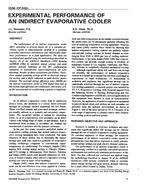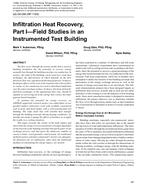Energy retrofits provide an economically attractive solution to reduce the carbon footprint of existing buildings. However, indoor environmental quality andoccupant comfort are often overlooked in the retrofit process. In this paper, we present the results of pre-retrofit monitoring of several multi-unit residentialbuildings built between 1965 and 1975 in Toronto, Canada. The temperature, relative humidity and mean radiant temperature were measured in over70 units across seven social housing buildings currently undergoing an energy retrofit process. Occupant thermal comfort was estimated using both theGraphic Comfort Zone and Analytical methods outlined in ASHRAE Standard 55-2013. Internal vapor pressure excess during non-air conditioningperiods was used to assess excess moisture in the suites. A major finding was that the units were uncomfortable over 50% of the time, with overheatingbeing the main cause of discomfort. Location within a building (e.g., upper vs. lower floors) and building-specific effects showed little impact, although therewas a weak seasonal correlation with more overheating in the summer. These findings are consistent with an occupant survey taken early in the project.There was no consistent evidence of excess moisture, although this may be due to the observed overheating in the units and the location of the monitoringequipment. The results were used to inform the energy retrofit design process and are currently being monitored to ascertain how the retrofits affect occupantcomfort in these buildings.
Citation: 2016 Annual Conference, St. Louis, MO, Conference Papers
Product Details
- Published:
- 2016
- Number of Pages:
- 8
- Units of Measure:
- Dual
- File Size:
- 1 file , 2.2 MB
- Product Code(s):
- D-ST-16-C029


